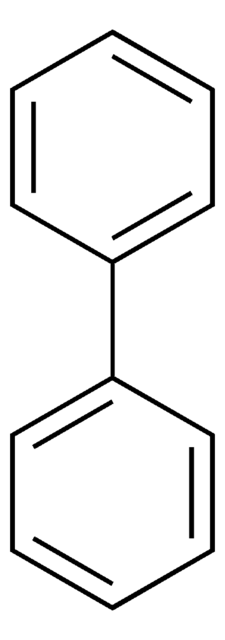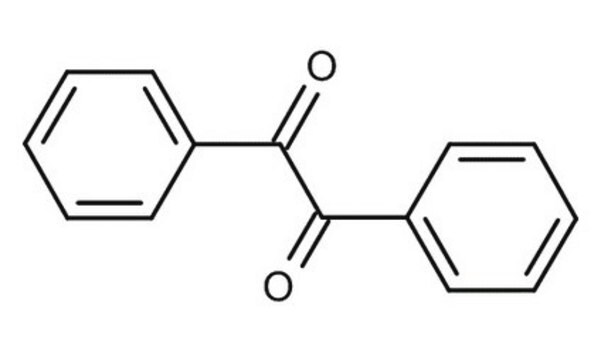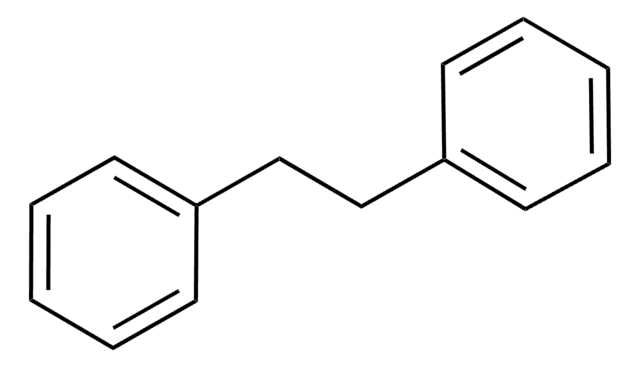About This Item
Recommended Products
biological source
synthetic
Quality Level
Agency
meets purity specifications of JECFA
vapor density
5.31 (vs air)
vapor pressure
9.46 mmHg ( 115 °C)
Assay
≥99%
form
flakes
powder or crystals
autoignition temp.
1004 °F
expl. lim.
0.6 %, 111 °F
5.8 %, 166 °F
bp
255 °C (lit.)
mp
68-70 °C (lit.)
application(s)
flavors and fragrances
Documentation
see Safety & Documentation for available documents
food allergen
no known allergens
Organoleptic
geranium; green
SMILES string
c1ccc(cc1)-c2ccccc2
InChI
1S/C12H10/c1-3-7-11(8-4-1)12-9-5-2-6-10-12/h1-10H
InChI key
ZUOUZKKEUPVFJK-UHFFFAOYSA-N
Gene Information
human ... CYP1A2(1544) , ESR1(2099)
Looking for similar products? Visit Product Comparison Guide
Related Categories
General description
Disclaimer
Signal Word
Warning
Hazard Statements
Precautionary Statements
Hazard Classifications
Aquatic Acute 1 - Aquatic Chronic 1 - Eye Irrit. 2 - Skin Irrit. 2 - STOT SE 3
Target Organs
Respiratory system
Storage Class Code
11 - Combustible Solids
WGK
WGK 2
Flash Point(F)
230.0 °F - closed cup
Flash Point(C)
110 °C - closed cup
Personal Protective Equipment
Choose from one of the most recent versions:
Already Own This Product?
Find documentation for the products that you have recently purchased in the Document Library.
Customers Also Viewed
Global Trade Item Number
| SKU | GTIN |
|---|---|
| W312908-10KG | 4061834397267 |
| W312908-SAMPLE | 4061835566587 |
| W312908-1KG | 4061835566570 |
| W312908-5KG |
Our team of scientists has experience in all areas of research including Life Science, Material Science, Chemical Synthesis, Chromatography, Analytical and many others.
Contact Technical Service











